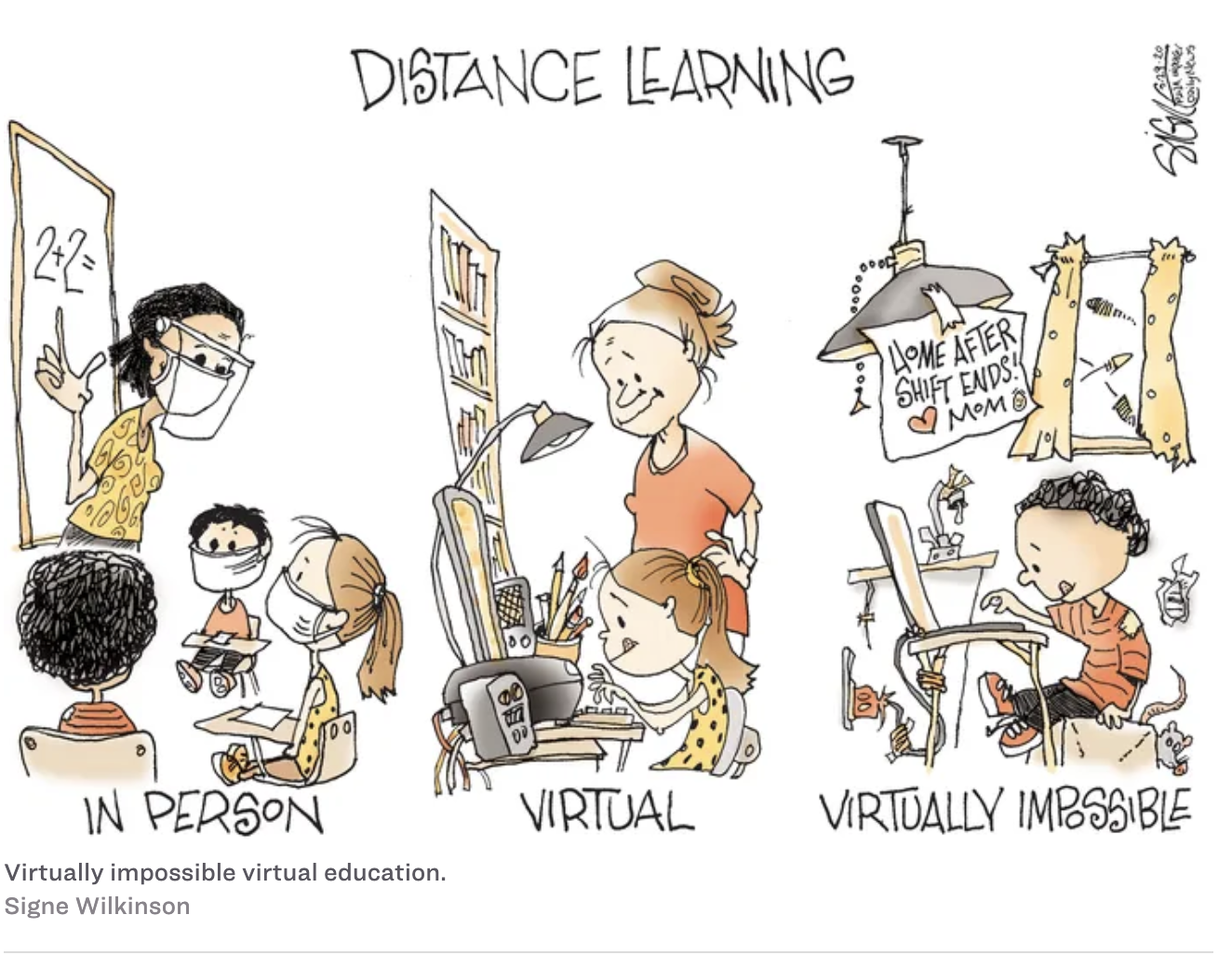
RATE THIS EXAMPLE FROM "BENEFICIAL" TO "HARMFUL"
BENEFICIAL HARMFUL
Translate to other languages
Virtual Learning Cartoon
Background Information
This image is an editorial cartoon from The Philadelphia Inquirer, created by Signe Wilkinson. The message is intended everyone since COVID-19 has affected all in some form or another. More specifically this message is intended for children in school and anyone connected to them i.e. teachers, administrators, parents etc.
Technique Used
Activate Emotion
This is propaganda because
This specific editorial cartoon is meant to provoke emotion and call people to action. On top of using ethos, logos is also used. Logos is represented in this image because it is logical to understand that not all students have the same opportunities or access to proper online education. It is also shown through the carefully placed arrangement and organization of the image. This image represents various children in school during COVID-19. The image shows that all of these children have a different experience, whether this is due to lack of resources, or difference in income between households. This represents inequalities within our school system. Propaganda can be considered "a form of communication aimed towards influencing the attitude of a population toward some cause or position". This specific definition of propaganda applies to this cartoon. Cartoons such as the one depicted about can be considered "visual rhetoric". This example of propaganda is beneficial in the sense of highlighting the negatives of online or distance learning for children.
Source
The Philadelphia Inquirer

Share Your Ideas